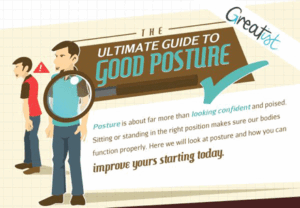Taming Your Tension
Muscle tension is like a car that’s idling too fast. The car is revved up and working hard but nothing useful is happening. There’s more wear and tear on the motor. Not only that, but the motor is burning more fuel and creating more pollution.
With muscle tension your muscles are working hard, but are not doing anything that’s useful. The tension doesn’t help you move and it certainly doesn’t make your muscles stronger. It doesn’t really accomplish anything at all.
It does, however, cause a lot of wear and tear on your body. It strains the tendons that hold your muscles to your bones. It pulls the joints tighter together which not only causes horrible grinding and crunching sounds, but also causes the cartilage in your joints to wear out. The tension limits your movement, interferes with your co-ordination and may make you more accident-prone.
The tense muscles burn up the fuel in your muscles, making you feel tired. They also create the equivalent of car exhaust – toxic waste products (called metabolites) that fatigue your muscles and make them feel sore and achy.
You know from experience – tension is not good.
It’s important that you get your tension under control. Not only will you feel more comfortable, but you’ll also prevent a lot of problems from occurring, from kinks in your neck to early arthritis. To manage your tension, it helps to know what causes it.
The culprits
Stress is one of the major sources of muscle tension. When under stress, you become like a turtle trying to pull its head into its shell. Your shoulders round forward and lift up as your head pulls back. If your stress level is high, you may actually notice your shoulders around your ears. More often than not, the stress isn’t quite so significant and the shoulder muscles simply tighten up.
Just sitting or staying still for periods of time will also cause your muscles to tighten up. By remaining static, you are in a sense training your muscles to lock your back or neck in a certain posture. When you begin to move, your muscles remain tense in an effort to maintain your position. It takes some time for the muscles to realize that they can let go and relax. The longer you sit without moving, the more you train your muscles to lock into position and the longer it takes to release them.
In looking at the way that tension is created, you can see that the areas that are most vulnerable to tension are your neck, shoulders and back. Although tension can develop in any muscle in your body, these are the areas that are most commonly affected.
Tenderness and tension
How do you know if your muscles are tense? One of the best indicators is tenderness in your muscles. Tenderness is the discomfort you feel when you press on the muscles.
When your muscles are healthy and relaxed, they won’t be tender. You won’t feel any discomfort even if your massage therapist is applying lots of pressure.
Blood vessels normally deliver oxygen and nutrients to a muscle and flush away waste products. When your muscles are tense, they essentially squeeze their own blood vessels. The muscles are working hard and creating lots of waste that doesn‘t get washed out of the muscle. As these metabolites begin to accumulate, they start to irritate pain nerves. If the tension is significant, you’ll actually start to feel achy. If the tension is less severe, the nerves become sensitive and any added stimulus, like a squeeze to the muscle causes discomfort.
Massage to the rescue
Massage plays an important role in helping you deal with your tension. Your massage therapist, like a mechanic, can adjust how fast your “muscle motors” are idling.
Massage has a twofold action. First, it helps induce a relaxation response in your body. This reduces the common defensive reactions in your body, including that turtle-in-the-shell action of your neck muscles. Relaxation causes your brain and nervous system to slow down and this in turn lowers the tension level of all the muscles in your body.
Secondly, with massage your muscles are pulled and stretched. This physically releases the muscle. In addition, the sensations that your muscles feel, both conscious and subconscious, give your brain information about the level of tension that exists in your muscles. This helps your nervous system to adjust your muscles to a normal level of tone.
The wonderful thing about massage is that its effect on tension is almost instantaneous. You feel the tension leaving your body immediately. You don’t have to wait days or weeks to see results.
However, don’t expect long-lasting results from just one massage. Although this may happen, factors like stress and a sedentary lifestyle are likely to perpetuate your tension. For this reason regular massage is important.
Typically, when you start to get massage, you may experience a great deal of discomfort and your therapist may have to work rather lightly. As your muscles relax and your circulation becomes more normal, the tenderness starts to decrease. Subsequent massages are usually much more comfortable. You may find that you have to ask your therapist to work deeper to get the same level of sensation.
If you find that your muscles are always tender when you visit your massage therapist, it’s time to consider getting more frequent treatments and taking a more active approach to managing your tension.
Regular massage treatments will not only reduce your tension, but they will train your muscles to maintain a lower level of tension or to recover from tension more quickly.
Once your muscles learn what it’s like to be relaxed, you can reduce the frequency of your massage treatments. At that point, you can use massage more as a maintenance tool and schedule treatments for the year, just as you schedule regular tune-ups for your car.
How often do you need a tune up? As a general rule, we suggest monthly maintenance treatments. However, there are many factors that determine your need for massage. Since your massage therapist knows you and your body, it’s best to ask for specific recommendations.
Ready to #feelbetter?
You're just a click away from a wicked good massage!
-

60 Minute Massage Gift Card
$170.00 Add to cart -

90 Minute Massage Gift Card
$255.00 Add to cart -

Mini Aer Small Room Air Purifier
$149.00 Add to cart -
Sale!

Thera-Pearl Sports Pack/Hot Cold
Original price was: $14.99.$12.99Current price is: $12.99. Add to cart -

3 Somadome Sessions Gift Card
$135.00 Add to cart -

TheraBand CLX Connective Loop
$14.99 Select options -

6 Somadome Sessions Gift Card
$270.00 Add to cart -
Sale!

Biofreeze
Original price was: $14.99.$12.99Current price is: $12.99. Add to cart
Passion Mountain
I was at an event recently and was asked by somebody how I could STILL be so passionate for what I do. He said, “What I mean is that you talk about what you do with the passion of child flipping through a new pack of baseball cards. I wish I was that passionate about…
Read MoreFish You Should Scale Back On
New Englander’s love their seafood and we deepen our love affair every summer when our favorite crustaceans, ‘lobstah’ is a plentiful. But what is the best seafood for us and what are the ones that we should be staying away from regardless of how yummy they may be? Monterey Bay Aquarium has combined data from…
Read MoreSports are a Great Metaphor
It’s no secret that my life has always revolved around athletics. From my early days playing pop warner football, through my college years of lacrosse and on into the various community leagues since, being part of a team has always been where I feel most comfortable. What I enjoy most about being part of a…
Read MoreWhat is an Expert?
“An expert is someone widely recognized as a reliable source of technique or skill whose faculty for judging or deciding rightly, justly, or wisely is accorded authority and status by their peers or the public in a specific well-distinguished domain.” – Wikipedia This past month I flew to Atlanta to present a few classes in…
Read MoreThe Power of a Hug
Originally Posted 5/1/2014; following the 1 year anniversary of the Boston Marathon Bombings and our mission to rebound after these horrible attacks on our city. We helped orchestrate the ‘One Run for Boston’; a 3328.2 NON-STOP running relay from LA to Boston, raising over $500K for the victims and survivors of the events of 4/20/2013.…
Read MoreTips from the Table
Without fail, every marathon season, I am asked by my patients, what kind of advice I would offer up to them as they prepare to run the Boston marathon. I first admit that I have never (nor will ever) run a marathon, but given my unique insight of spending 1000’s of hours alone in a…
Read MoreShoulder Impingement
The glenohumeral joint is a highly complex articulation. It has the greatest range of motion of any joint in the body. However, its increased motion occurs at the expense of stability, requiring the soft tissues to play a more critical role in maintaining joint integrity. As a result of increased mechanical demands, numerous soft-tissue injuries…
Read MoreTrain, train, train. Train of fools.
In my seventeen years as a massage therapist, I am still amazed by some of the things I see in my office. Being situated 1/10th of a mile from the finish line of one of the most prestigious marathons in the world, the Boston Marathon, we see more than our fair share of runners coming…
Read MoreAchilles Tendon Disorder
Achilles Tendon Disorder Massage therapists see many clients with active lifestyles. Running, jumping, dancing, climbing, or any number of other activities can put serious stress on the Achilles tendon (AT). AT disorders also can contribute to biomechanical disorders in the foot and lower extremity. That is why it is important for the massage practitioner to…
Read More


